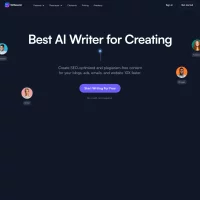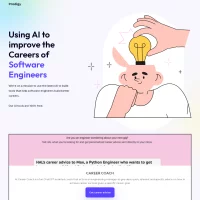Stay Ahead of the Curve
Latest AI news, expert analysis, bold opinions, and key trends — delivered to your inbox.
Microsoft Unveils Tool to Correct AI Hallucinations; Experts Urge Caution
4 min read Microsoft has recently announced a new tool designed to combat AI hallucinations. These hallucinations, which occur when AI models generate incorrect or misleading information, have been a significant concern in the field of artificial intelligence. September 25, 2024 06:19
Microsoft has recently announced a new tool designed to combat AI hallucinations. These hallucinations, which occur when AI models generate incorrect or misleading information, have been a significant concern in the field of artificial intelligence.
While Microsoft's claim is promising, experts are urging caution. They argue that addressing AI hallucinations is a complex problem that may not be entirely solved by a single tool.
Understanding AI Hallucinations
AI hallucinations arise when AI models generate content that is factually incorrect, inconsistent, or simply nonsensical. This can occur due to various factors, including:
- Data Quality: If the data used to train an AI model is biased, incomplete, or inaccurate, the model may produce biased or misleading output.
- Model Architecture: The underlying architecture of an AI model can also contribute to hallucinations. For example, some models may be more prone to generating creative, but inaccurate, content.
- Prompt Engineering: The way a prompt is formulated can significantly impact the quality of an AI's response. Ambiguous or misleading prompts can lead to hallucinations.
Microsoft's Approach
Microsoft's new tool is designed to identify and correct AI hallucinations. While the exact details of the tool are not yet publicly available, it is likely to involve a combination of techniques, such as:
- Data Cleaning: Ensuring that the data used to train AI models is accurate and unbiased.
- Model Refinement: Improving the architecture of AI models to make them less susceptible to hallucinations.
- Prompt Engineering Guidelines: Providing guidelines for crafting effective prompts to reduce the likelihood of hallucinations.
The Challenges of Addressing AI Hallucinations
Despite Microsoft's efforts, addressing AI hallucinations remains a complex challenge. Some of the key obstacles include:
- The Subjectivity of Truth: Determining what is "true" can be subjective, especially in areas like history, politics, and social science. AI models may struggle to distinguish between factual information and opinions or biases.
- The Evolution of Language: Language is constantly evolving, and AI models may struggle to keep up with new terms, slang, and cultural references. This can lead to misunderstandings and hallucinations.
- The Malicious Use of AI: There is a risk that AI hallucinations could be used to spread misinformation or disinformation. Malicious actors may intentionally manipulate AI models to generate misleading or harmful content.
The Importance of Human Oversight
Even with the best tools and techniques, human oversight will still be necessary to ensure the accuracy and reliability of AI-generated content. Humans can provide context, identify biases, and correct errors that AI models may miss.
Conclusion
Microsoft's new tool represents a promising step in the fight against AI hallucinations. However, it is important to approach this development with a critical eye and recognize the ongoing challenges in this field. By understanding the causes of hallucinations and developing effective tools and strategies, we can work towards building more reliable and trustworthy AI systems.



















 AI Agents
AI Agents